Shifting a deeply ingrained mindset
Helping high school students understand success beyond grades
Comapany
Play for People Skills
DATE
Dec. 2022 - July 2023
TL;DR
I led 0-1 research and design for a client project focused on strengthening high school students’ interpersonal, or “soft,” skills. To counter stigmas in the education system and engage teens on their own terms, my team and I created a play experience called Terrible Workers. This game has demonstrated measurable impact, boosting students’ awareness and motivation to improve. For this work, I have won two international design awards and built a business dedicated to shifting attitudes through play.


BACKGROUND
A top-rated school district wanted us to help boost students’ interpersonal skills
Our client, a school district in Pittsburgh nationally recognized for its strong academic performance and high test scores, aimed to further enhance students' career readiness by helping them build interpersonal—or 'soft'—skills to complement the 'hard' skills taught in the classroom. In today’s innovation-driven economy, interpersonal skills are often more critical to success than technical knowledge.
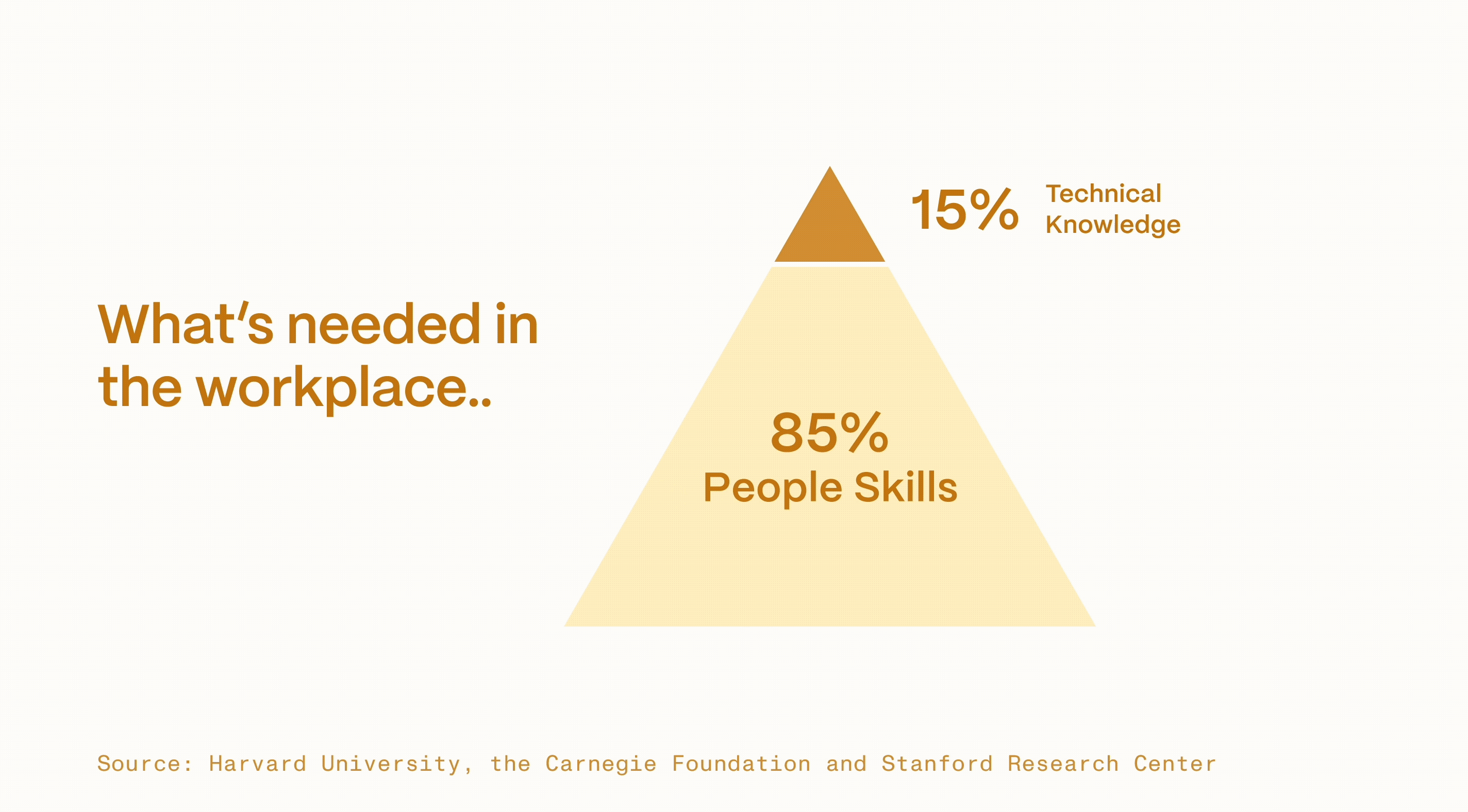
Initial research
Why are interpersonal skills overlooked in today’s school system?
To understand the root of the problem, we began by reviewing existing literature and consulting with experts in the field. We then conducted classroom observations, in-depth interviews, and participatory sessions with students, teachers, and administrators. Before, this project, I never thought I'd walk down the halls of high school again!

We often engaged staff in collaborative design activities such as Rose, Bud, Thorn to facilitate deep discussion and build trust.

We conducted various field research activities with students, such as anonymous box for how students felt during the school day.
We found that deep cultural & regulatory barriers keep the focus on test scores
Administrators and teachers felt they had no choice but to prioritize standardized test scores because, since regulations tie these scores to the school's funding and teacher job security. Among parents and the broader community, we saw a strong cultural emphasis on test scores and college admissions as indicators of success. Unsurprisingly, these students—positioned at the bottom of this cascade of influence—have become motivated solely by grades and college applications.

Capturing the status quo of the education system
A grassroots solution for teens held the greatest potential for success
I was deeply struck by how difficult it is to create change in the education system. Through conversations with our clients, who had experienced the challenges of institutional change time and again, we agreed that our best chance of success would come from designing a solution student would directly adopt themselves. Additionally, if teachers had any role in the solution, it would need to be lightweight seeing as they're already juggling heavy workloads.
concept testing
We tested many design directions, but all felt like more homework to the teens
Example: reflection
Weekly check-ins with prompts that encourage self-awareness
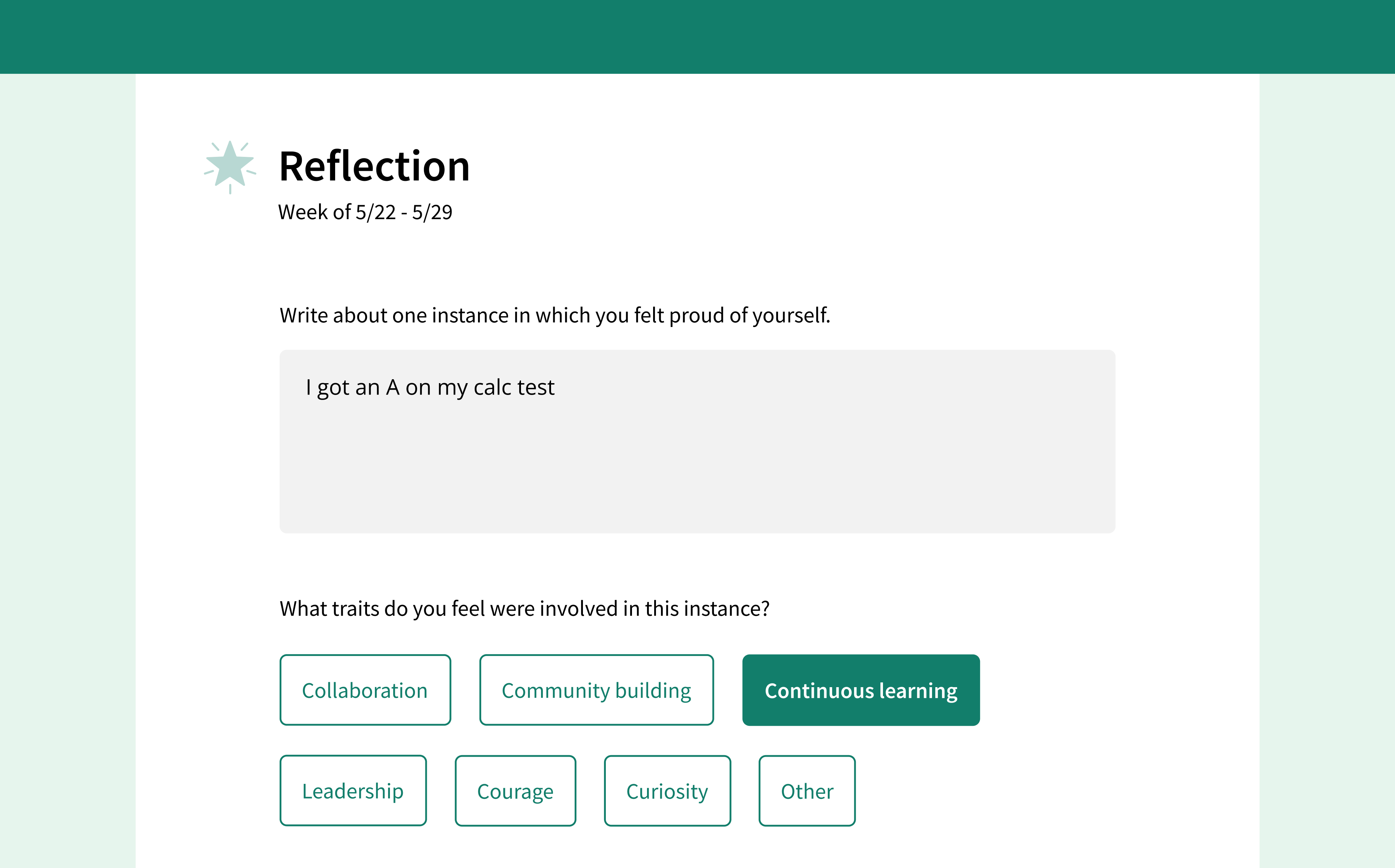
Why didn't it work?
Students displayed an absence of active thinking due to repetitive, checklist-like reflection activities they’ve had to do in their classes. As one student said, “reflection is overdone.”
Example: progress visualization
A personality quiz in which students map their interpersonal skills over time
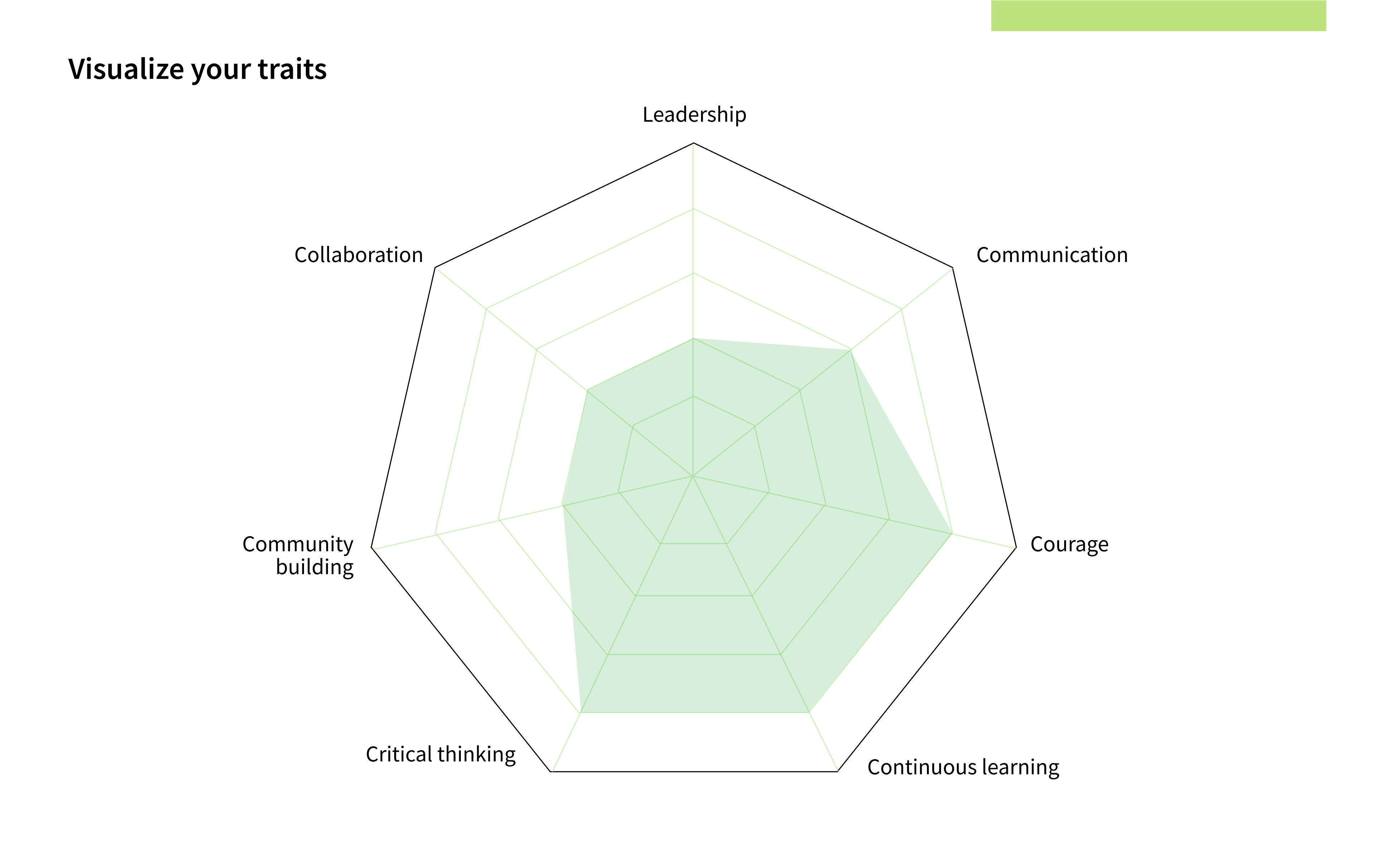
Why didn't it work?
Visualizations and charts seemed to carry the wrong message, accidentally encouraging conformity and focus on an end goal.
Overall, everything we presented to students felt too similar to school. Given their current mindset, they completed the tasks simply because they were instructed to, — ‘checking the box’ rather than meaningfully engaging or internalizing the experience. This posed a huge issue, since interpersonal skills need to come from within. Moreover, if our solution reminded them of school, they would never choose to engage with it on their own.
STRATEGIC PIVOT
Recognizing the need for mental distance, we leaned into the power of play
During testing, my team and I noticed that the students only reacted positively in silly and social moments. So, we tested a social mini-game in which interpersonal skills were embedded. While this initial game was far from perfect, we got the validation we had been long been looking for when students asked "can we play again?" I realized then that the transformative power of play was our best bet.

Applying the "Magic Circle" model of game design
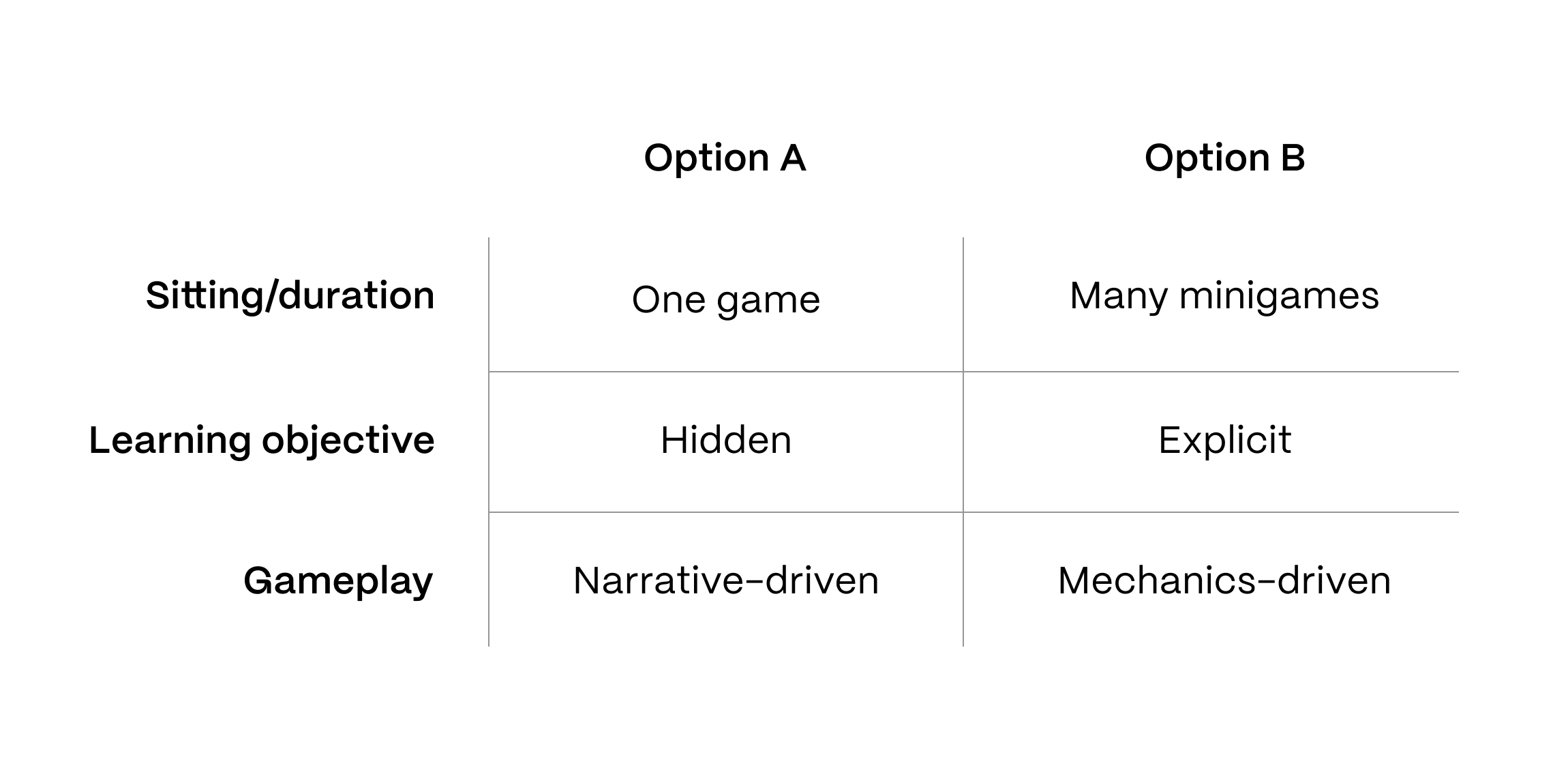
IDEATION & CRITIQUE, AGAIN!
We brainstormed and tested different games styles
In studying learning-based games, I noticed they fell into a few categories—so I created a matrix to help my team brainstorm without overlap.
Through critiques and playtests, we found that games with no preset narratives, shorter playtimes, active thinking, and social interaction performed best.
Through critiques and playtests, we found that games with no preset narratives, shorter playtimes, active thinking, and social interaction performed best.
To avoid the stigma of ‘educational games,’ we used the embedded design model
Intermix
We mixed in "on-topic" elements with elements that were purely there for fun.
Obfuscate
The true, educational purpose of the game is hidden from players.
Distance
Game scenarios feel mentally separate from daily high school life
From our process emerged a social card game called Terrible Workers
Players take turns being the 'Boss,' who is hiring for a job. The jobs are unique and diverse, ranging from vice president to pirate! All other players play Trait and Skill cards that make them the best for this job, sabotage others, and pitch themselves to win the round.
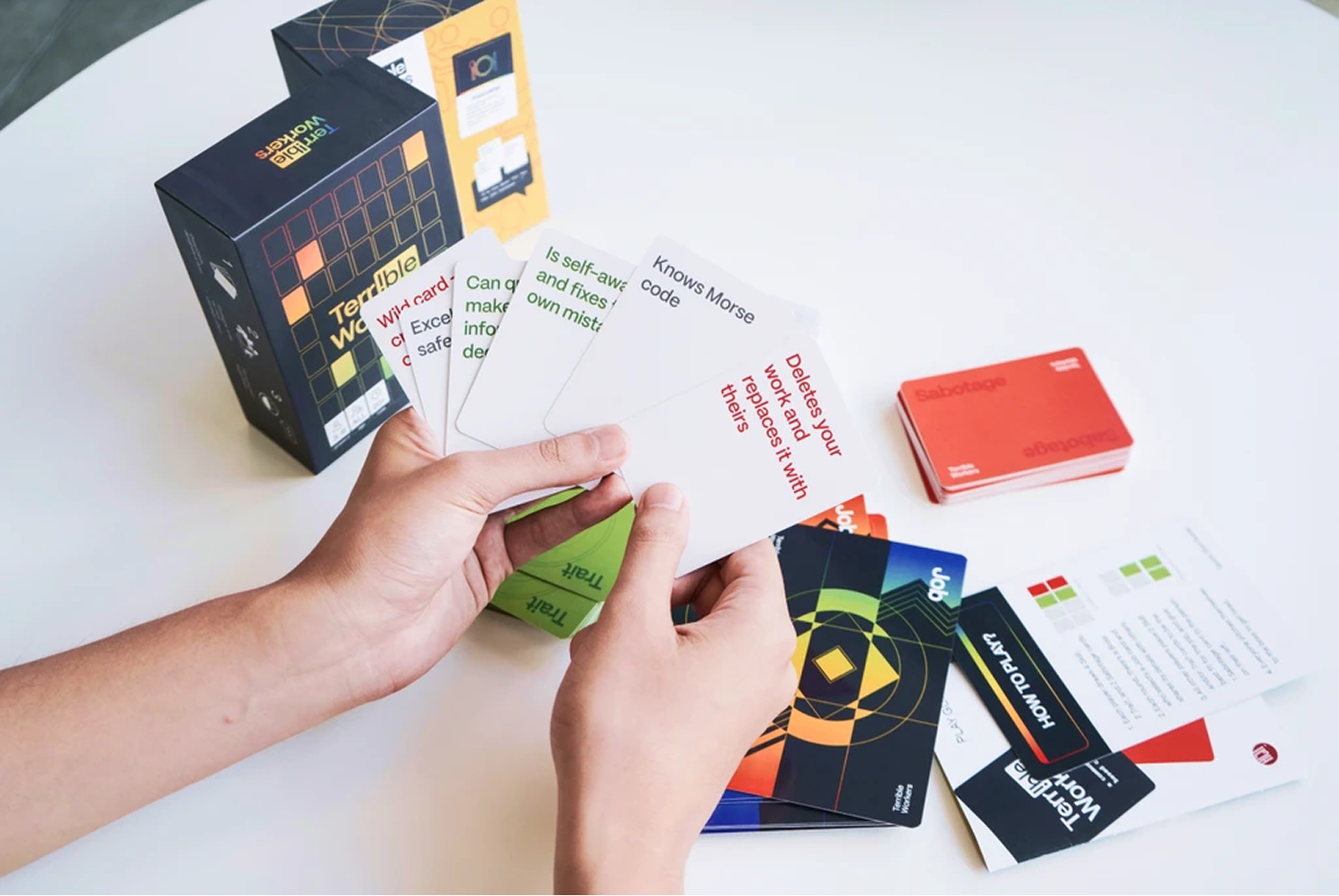
“They were totally, authentically engaged. I’ve never seen them full-belly laughing together like that!”
— Jim Hausman, Client
“The game was so fun!! I would play it anywhere, like after Thanksgiving dinner”
— Student player
Style guide and asset development
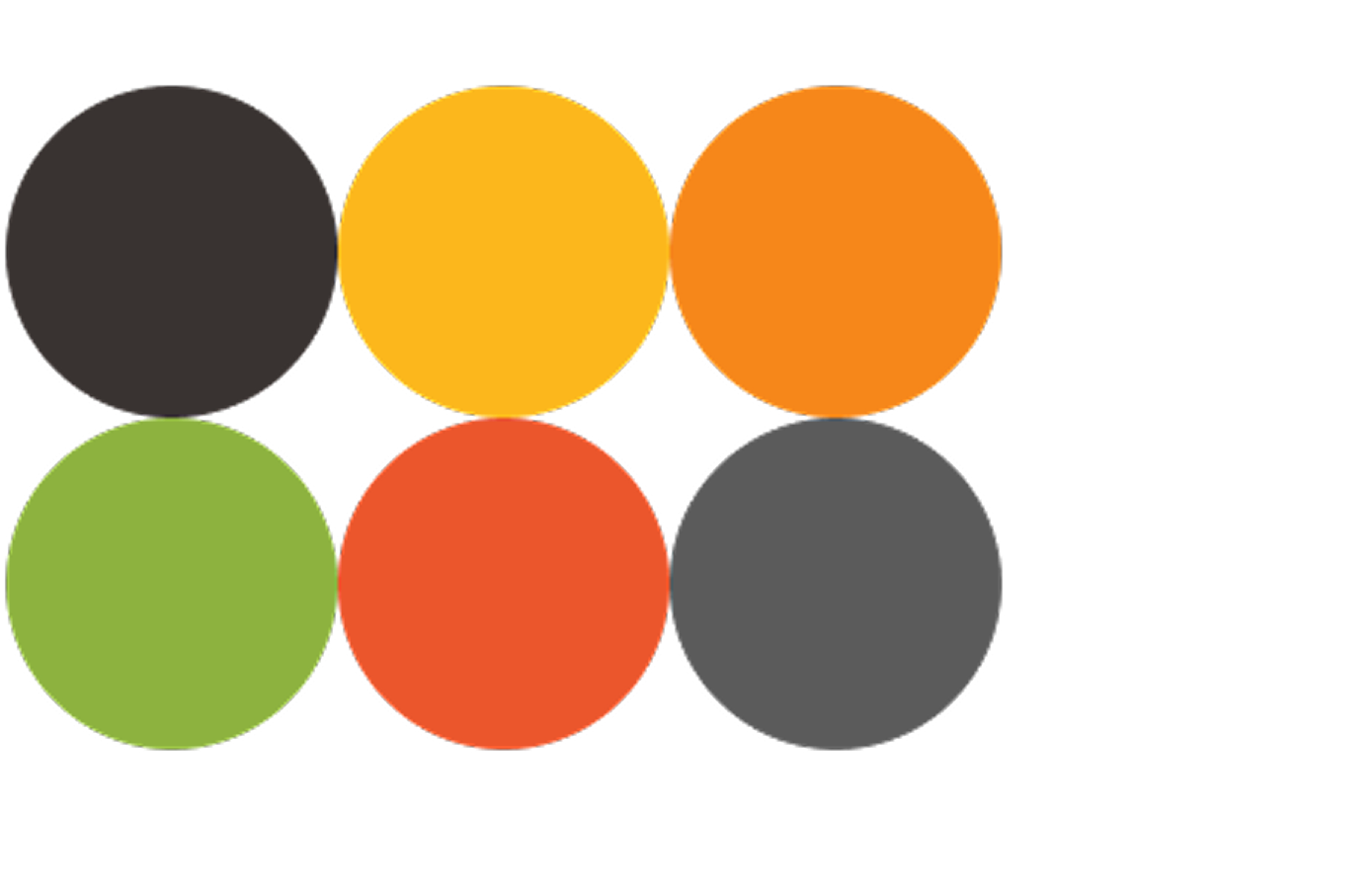
Color
We used a blacks and grays as our base colors to avoid being overly flashy and keep the focus on gameplay. Then, we integrated vibrant accents to break from traditional school aesthetics.

Typography
A basic and legible sans-serif font was chosen over a comic-book style font, as we found that high schoolers didn't want to play games that felt too childish.
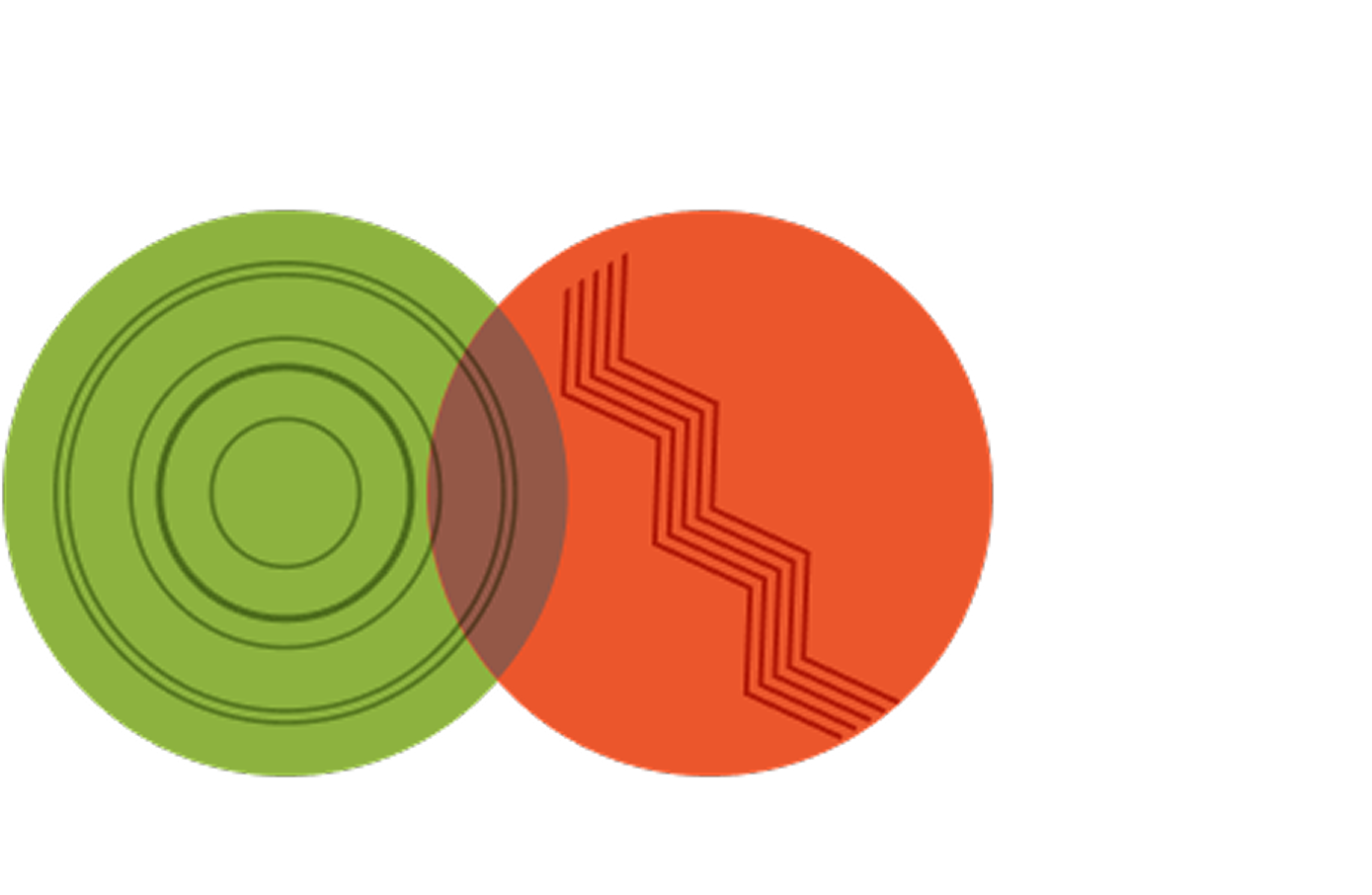
Accessibility
Meaning carried by color (such as green and red cards for positive and negative traits) is always complementary to text and symbols with the same message.
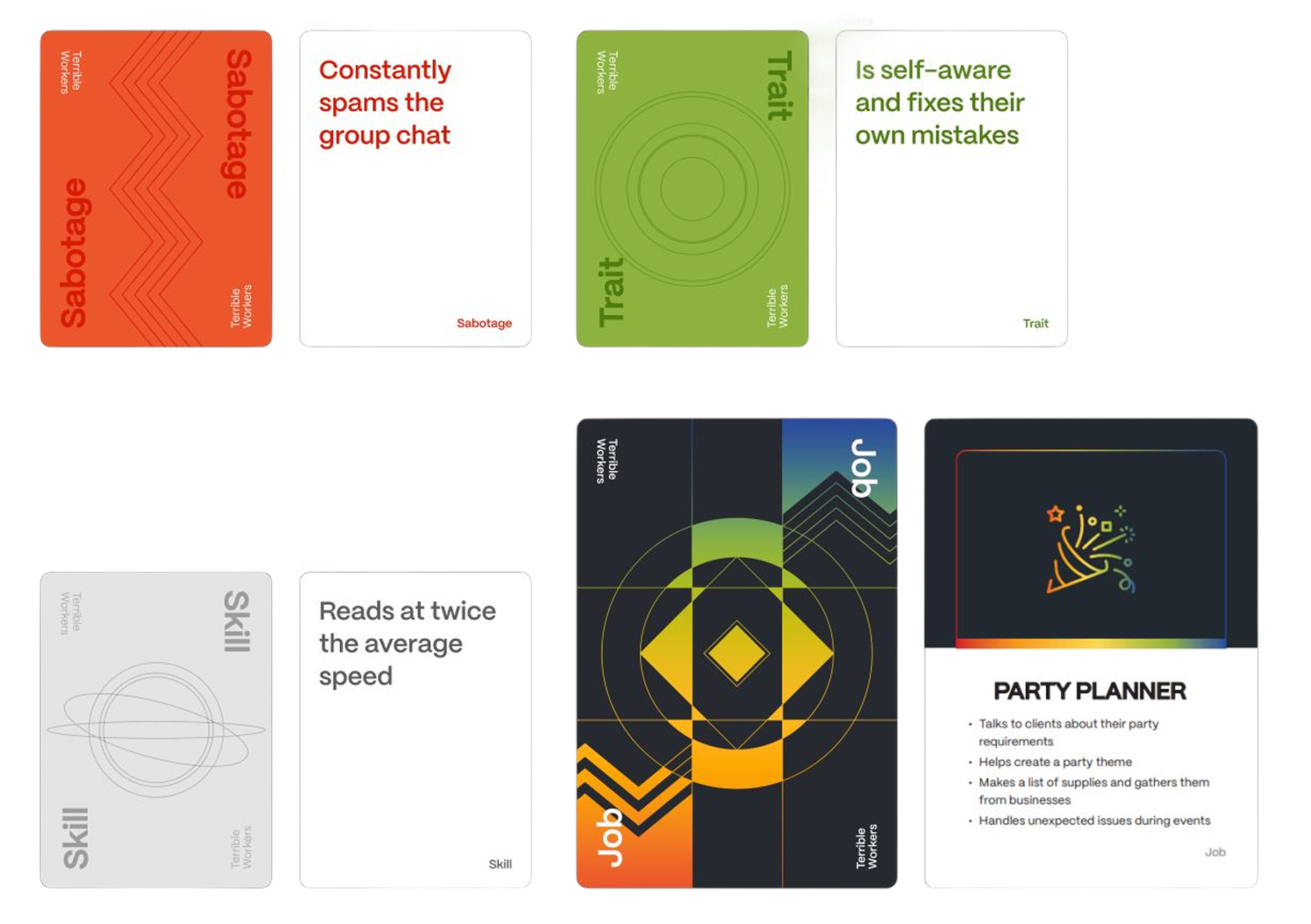

A fully printed rigid box enhances the game's visual appeal, imbuing it with a feeling of sophistication and immersion. While the hand cards were given a matte finish, the job cards were treated with glossy lamination, giving them eye-catching style that matches their purpose as prizes players strive for.
Over 50% of students’ value interpersonal skills more highly after playing
Terrible Workers boosts players awareness of soft skills and motivates them to improve. In our study, students’ priorities shifted: before playing, most set academic goals for themselves, but afterward, over 50% focused on social and emotional growth. Measuring changes in attitude and long-term behavior felt challenging at first, but we drew on prior work in the industry to guide the design of our studies.
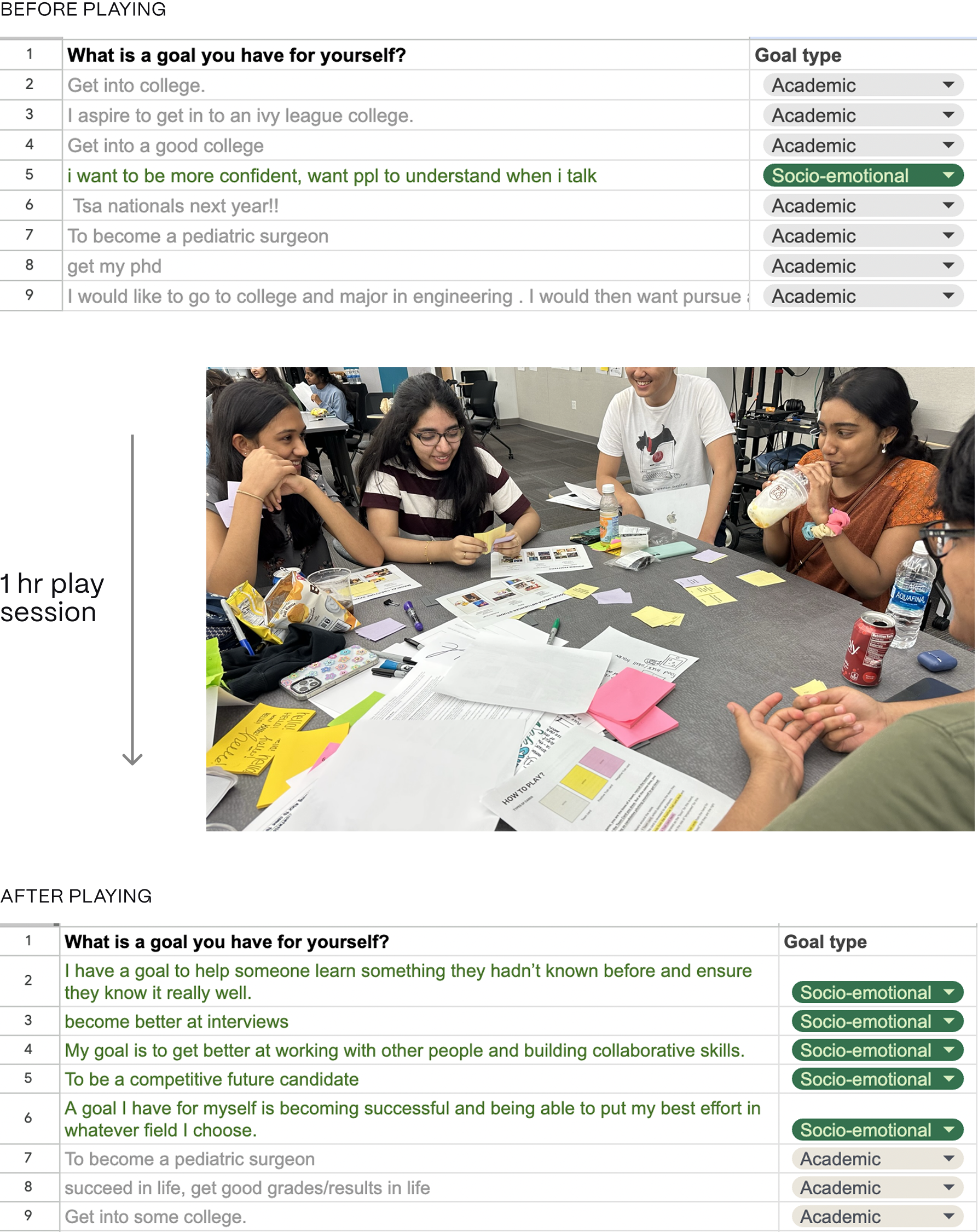
We packaged all we learned along the way into heuristics for other educators
To promote further change in the education system, I distilled our research insights into 10 heuristics for designing transformational games for teenagers. These heuristics serve as a guide for educators to design and facilitate similar games in the future. Each heuristic includes practical recommendations and illustrative examples, available both on a website and in a downloadable PDF booklet.
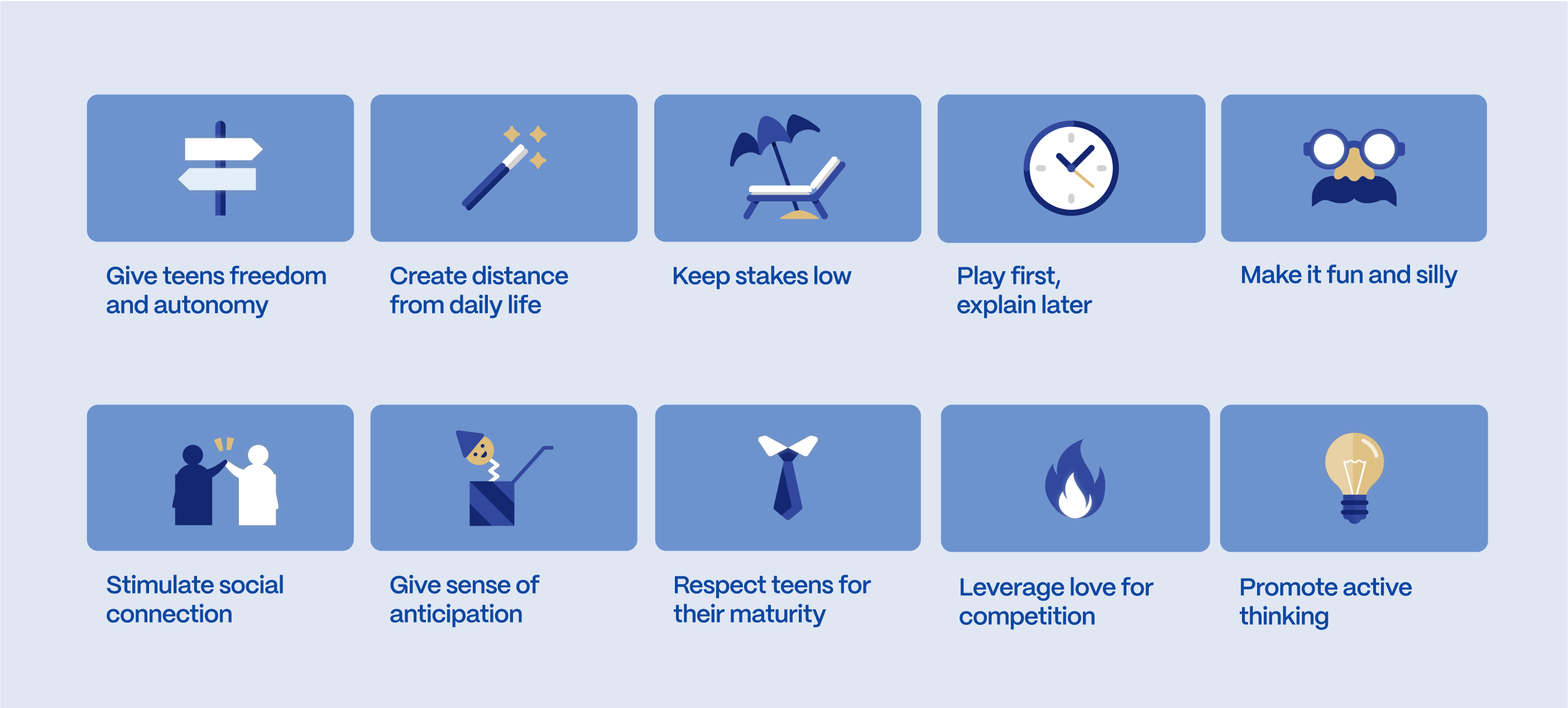


Continued impact and awards
I've been able to bring the experience of play for growth into educational programs, helping students prepare for well-rounded success and positive lives. This work continues to remind me of the power experience design has to shift deeply held beliefs.
We’re proud to have shared our game with students, educators, and designers worldwide. In 2024, we presented at serious play conferences in Denmark and Canada, earning awards at both the Serious Play Competition and the 12th International Educational Games Conference.
We’re proud to have shared our game with students, educators, and designers worldwide. In 2024, we presented at serious play conferences in Denmark and Canada, earning awards at both the Serious Play Competition and the 12th International Educational Games Conference.
